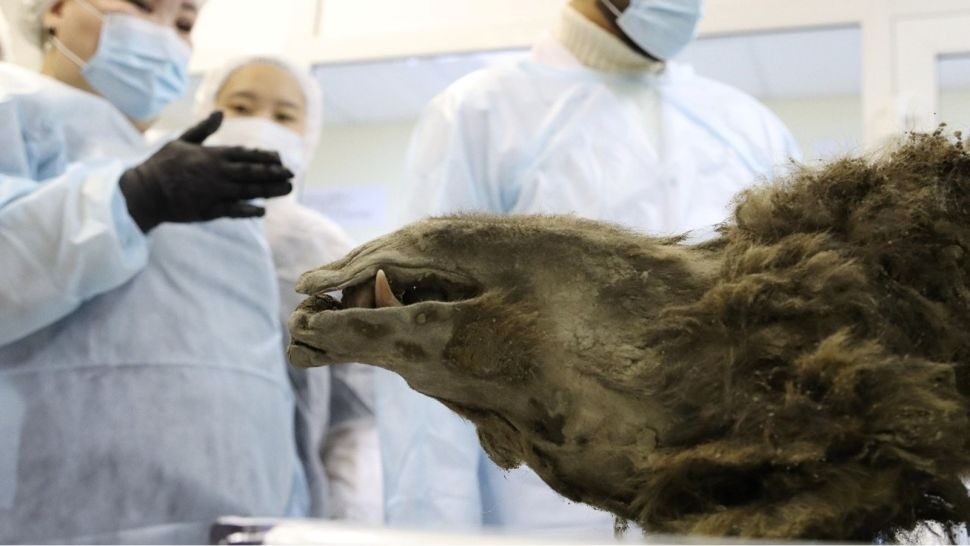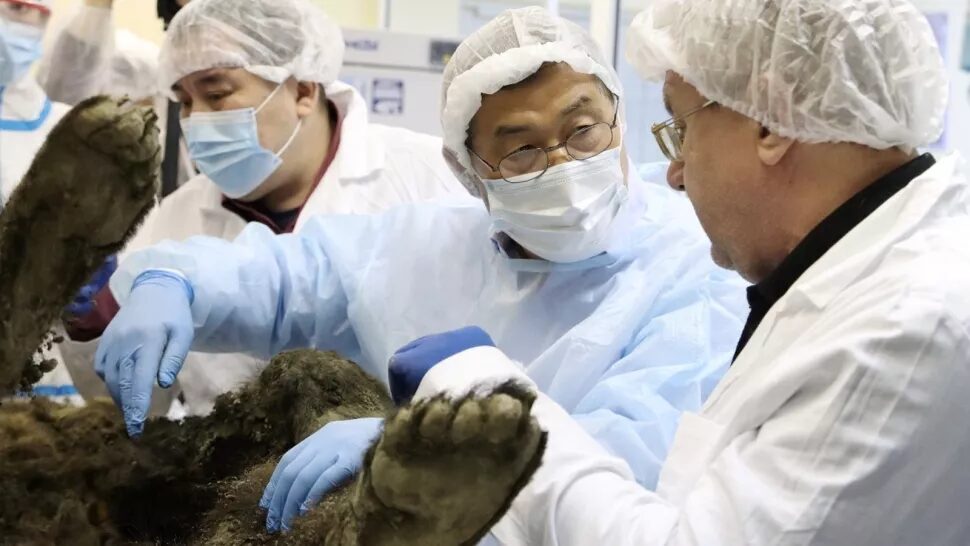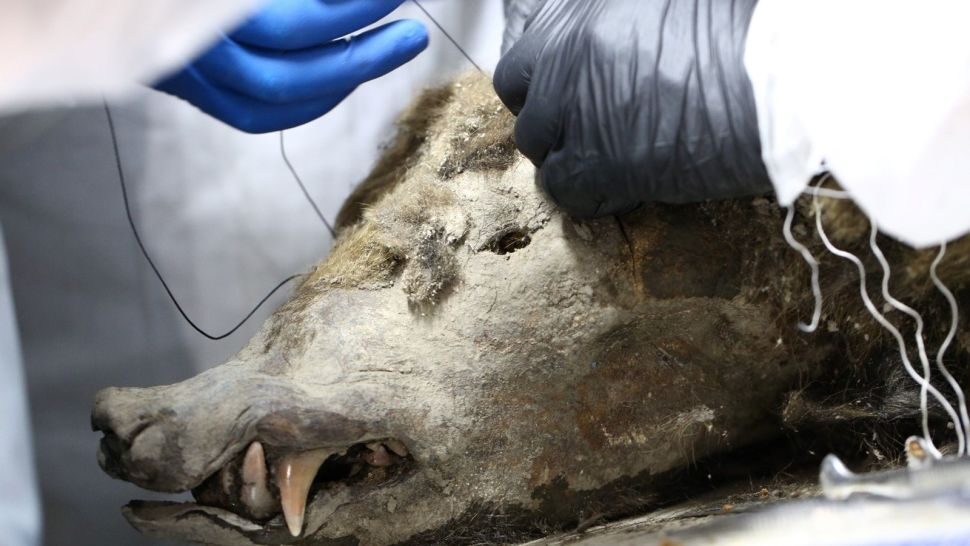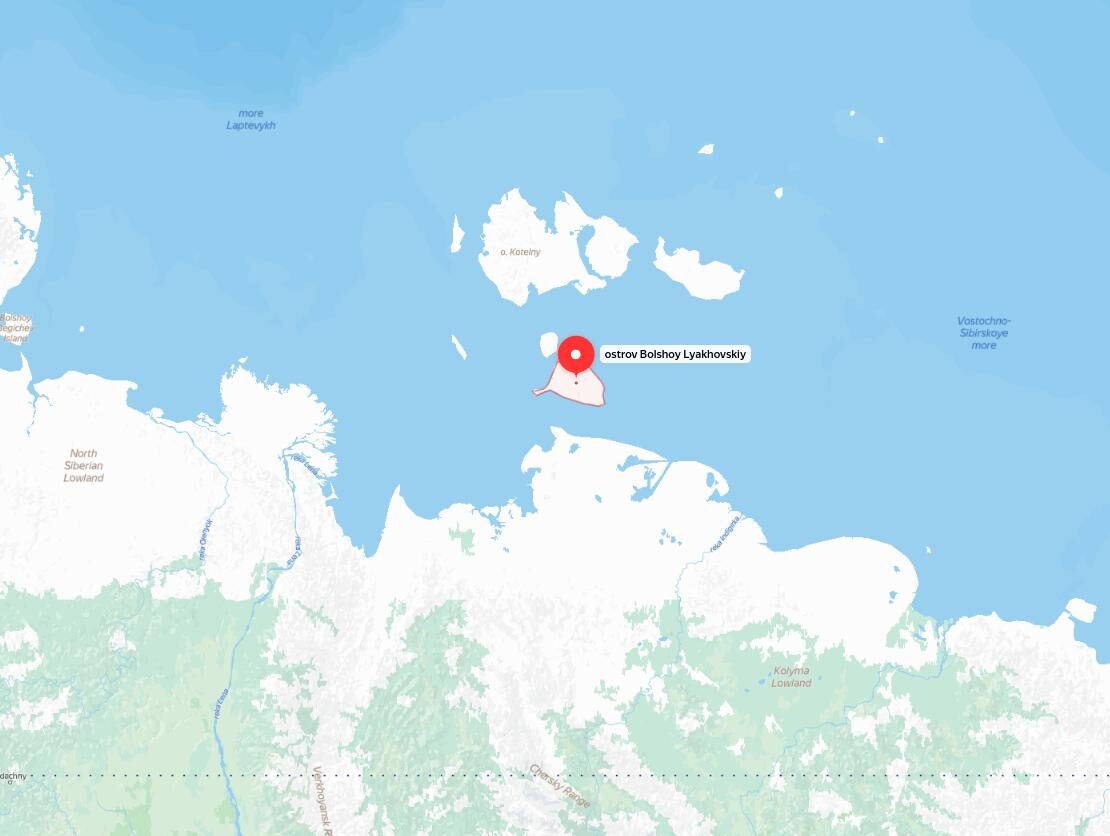
Reindeer herders unearthed the remains, which include the bear's intact skin, fur, teeth, nose, claws, body fat and internal organs, on Bolshoy Lyakhovsky Island, a remote Russian island located in the East Siberian Sea. Researchers named it the Etherican bear, after the nearby Bolshoy Etherican River.
When the Etherican bear was first uncovered, researchers at the Lazarev Mammoth Museum Laboratory at North-Eastern Federal University (NEFU) in Yakutsk, who have led the analysis of the remains, thought that the mummy was an extinct cave bear (Ursus spelaeus). Fossils of this long-lost species suggest that the enormous ancient bears, which are closely related to brown bears (Ursus arctos) and polar bears (Ursus maritimus), grew to around 11.5 feet (3.5 meters) tall and weighed a whopping 3,300 pounds (1,500 kilograms). U. spelaeus went extinct around 22,000 years ago, toward the end of the Last Glacial Maximum, the coldest part of the last ice age, so the researchers believed that the mummy was at least this old.
However, subsequent analysis revealed that their assumptions about the Etherican bear were way off: In reality, the beast was a brown bear that dated to around 3,460 years ago, the NEFU team said in a statement in December 2022.
Comment: Interestingly, this date and location coincides with the following:
- Mammoths survived in Siberia until just 3,900 years ago, climate change likely responsible for extinction, new study reveals
- Last mammoths plagued by genetic defects

The bear was a female that was 5.2 feet (1.6 m) tall and weighed around 172 pounds (78 kg), suggesting it was likely around 2 to 3 years old when it died. It is unclear how the bear perished, but its mummy showed signs of significant spinal injuries that likely contributed to its demise.
The Etherican bear was so well preserved that its stomach contents were still partly intact, which revealed that the bear had been dining on a mix of unidentified plants and birds, some of whose feathers were still inside the bear's belly. This fits with what we know about living brown bears that are omnivores, meaning they have a mixed diet of plants and animals.

One of the biggest remaining mysteries about the Etherican bear is how it ended up on Bolshoy Lyakhovsky Island.
The island is currently separated from the mainland by around 31 miles (50 kilometers) of water, so the most likely explanation is that brown bears moved to the island when it was still connected by sea ice during the Last Glacial Maximum, according to Reuters. But if this was the case, then researchers would have expected to find many more brown bear remains on the island, which is a hotspot for paleontological treasures, including mammoth remains.




Comment: Ice bridge? Land bridge? Either way, it may reveal how significantly different the geography of certain regions has been at different times in the past.